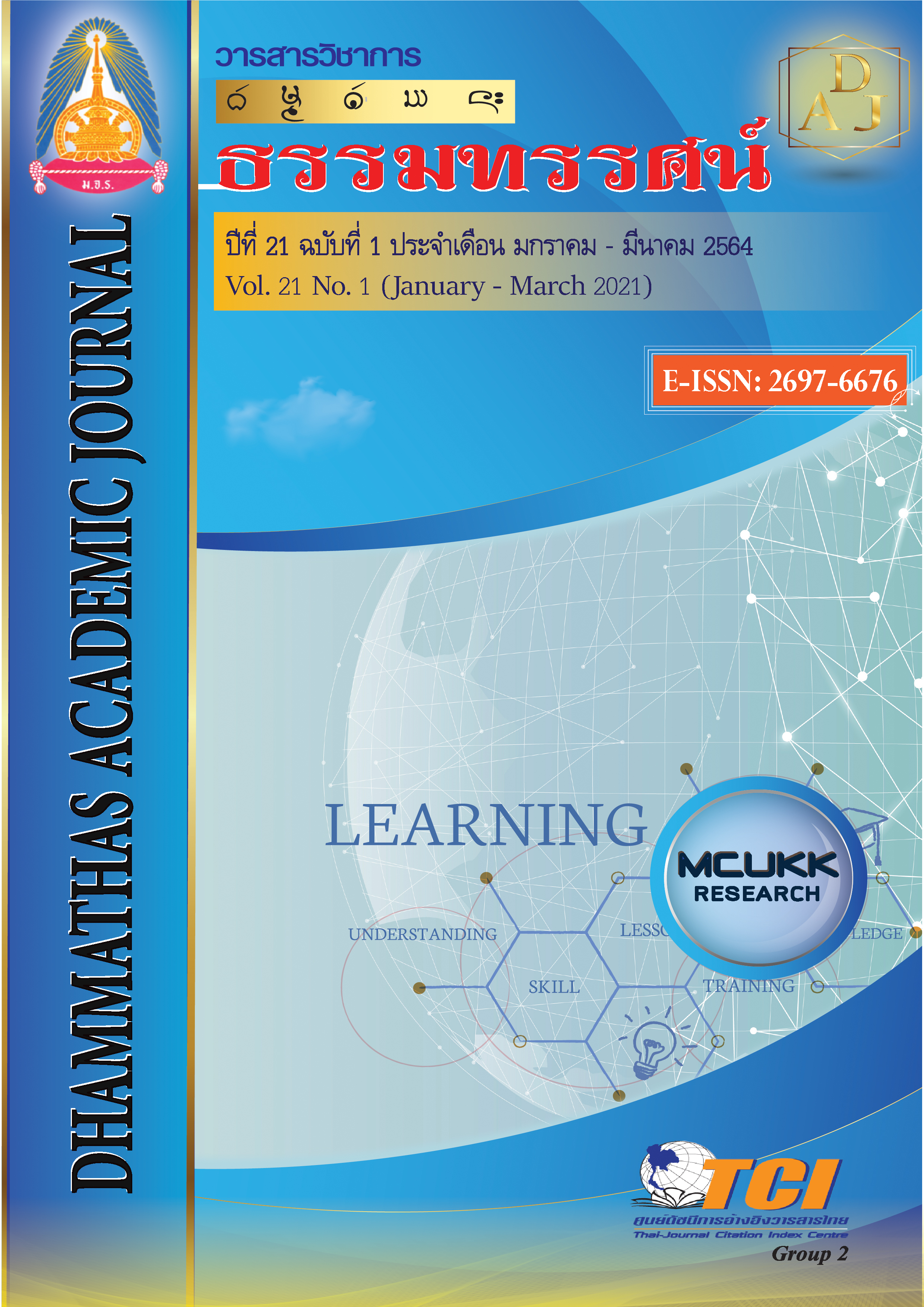The Effects Creative Art Activities for Multi-age Groups on Understanding Ability of Young Children towards Patterns and Relationship and Social Behaviors; Ban Butawong School in Buriram Province
Main Article Content
Abstract
The purposes of this research were: 1) to compare the abilities to understand patterns and relationship of preschool children before and after undertaking the creative art activities multi-age group; 2) to compare social behaviors of preschool children before and after undertaking the multi-age group creative art activities. The sample obtained by cluster random sampling comprised 17 preschool children, 4 and 5 years old, studying in kindergarten 2 and kindergarten 3 levels in the first semester of the 2019 academic year at Ban Butawong School in Buriram province. The instruments were the handbook and experience plans for creative art activities multi-age group that enhance patterns and relationship and social behaviors of preschool children, a patterns and relationship, and a social behavior observation form. Statistics Non-parametric (Sign-test) for data analysis were the median, inter-quartile range.
The results showed that:
1. The ability to understand patterns and relationship of preschool children after undertaking the multi-age group creative art activities was significantly higher than their counterpart ability before undertaking the activities at the .05 level.
2. The social behaviors of preschool children after undertaking the multi-age group creative art activities were significantly higher than their counterpart scores before undertaking the activities at the .05 level.
Article Details
References
กุลยา ตันติผลาชีวะ. (2542). การฝึกวินัยเด็ก. กรุงเทพฯ: มหาวิทยาลัยศรีนครินทรวิโรฒ.
________. (2551). รูปแบบการเรียนการสอนปฐมวัยศึกษา. กรุงเทพฯ: เบรน-เบส บุ๊ค.
จิตตินันท์ เดชะคุปต์. (2555). หน่วยที่ 5 พัฒนาการและการเตรียมความพร้อมของเด็กปฐมวัย. ประมวลสาระชุดวิชา หลักการและแนวคิดทางการปฐมวัยศึกษา. นนทบุรี: มหาวิทยาลัยสุโขทัยธรรมมาธิราช.
นิตยา ประพฤติกิจ. (2541). คณิตศาสตร์สำหรับเด็กปฐมวัย. กรุงเทพฯ: โอเดียนสโตร์.
นุชลี อุปภัย. (2555). จิตวิทยาการศึกษา. กรุงเทพฯ: จุฬาลงกรณ์มหาวิทยาลัย.
เบญจา แสงมลิ. (2545). การพัฒนาเด็กปฐมวัย. กรุงเทพฯ: เมธีทิปส์.
พรพิไล เลิศวิชา. (2552). สอนคณิตสาสตร์ตามแนวคิด Brain-based Learning. กรุงเทพฯ: สำนักวิชาการและมาตรฐานการศึกษา.
พัชรี ผลโยธิน. (2546). กิจกรรมศิลปะแบบร่วมมือของเด็กอนุบาล. เข้าถึงได้จาก http://kidsquare.com/content/content_detail.php?id=1042&catid=379
สถาบันส่งเสริมการสอนวิทยาศาสตร์และเทคโนโลยี. (2553). คู่มือกรอบมาตรฐานการเรียนรู้คณิตศาสตร์ปฐมวัยตามหลักสูตรการศึกษาปฐมวัย พุทธศักราช 2546. กรุงเทพฯ: สถาบันส่งเสริมการสอนวิทยาศาสตร์และเทคโนโลยี (สสวท.).
สำนักวิชาการและมาตรฐานการศึกษา สำนักงานคณะกรรมการการศึกษาขั้นพื้นฐาน. (2561). คู่มือหลักสูตร การศึกษาปฐมวัยพุทธศักราช 2560 (สำหรับเด็กอายุ 3-6 ปี). กรุงเทพฯ: ชุมนุมสหกรณ์การเกษตรแห่งประเทศไทย จำกัด.
สิริมา ภิญโญอนันตพงษ์. (2553). การวัดและประเมินผลแนวใหม่: เด็กปฐมวัย. กรุงเทพฯ: ดอกหญ้าวิชาการ.
อริสา โสคำภา. (2551). พฤติกรรมทางสังคมของเด็กปฐมวัยที่ได้รับการจัดกิจกรรมเล่านิทานอีสป ประกอบการใช้สถานการณ์จำลอง. (ปริญญานิพนธ์การศึกษามหาบัณฑิต). กรุงเทพฯ: มหาวิทยาลัยศรีนครินทรวิโรฒ.

